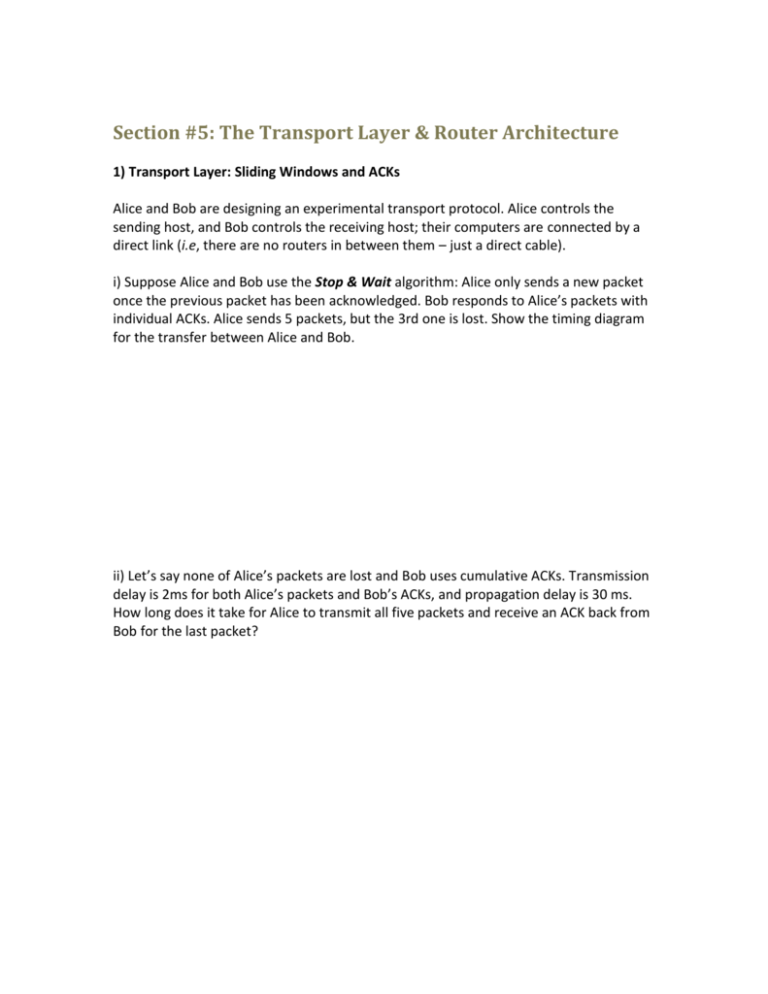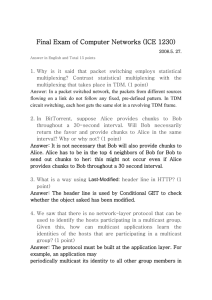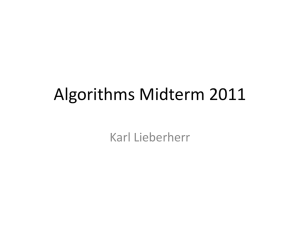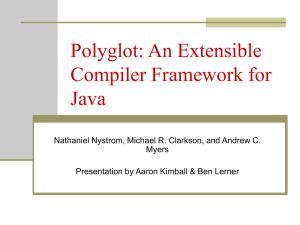handout5
advertisement

Section #5: The Transport Layer & Router Architecture 1) Transport Layer: Sliding Windows and ACKs Alice and Bob are designing an experimental transport protocol. Alice controls the sending host, and Bob controls the receiving host; their computers are connected by a direct link (i.e, there are no routers in between them – just a direct cable). i) Suppose Alice and Bob use the Stop & Wait algorithm: Alice only sends a new packet once the previous packet has been acknowledged. Bob responds to Alice’s packets with individual ACKs. Alice sends 5 packets, but the 3rd one is lost. Show the timing diagram for the transfer between Alice and Bob. ii) Let’s say none of Alice’s packets are lost and Bob uses cumulative ACKs. Transmission delay is 2ms for both Alice’s packets and Bob’s ACKs, and propagation delay is 30 ms. How long does it take for Alice to transmit all five packets and receive an ACK back from Bob for the last packet? iii) Realizing that this is rather slow, Alice upgrades to using a sliding window algorithm with a window size of 3. Bob continues sending cumulative ACKs. No packets are lost. How long does it take (using the parameters from (ii)) for Alice to transmit all five packets and receive an ACK back from Bob for the last packet? iv) Alice and Bob’s link is lossy again. Alice’s 4th packet is lost while Alice is using her new, more efficient sliding window algorithm with a window of 3. Alice and Bob use the Go-Back-N sliding window algorithm with cumulative ACKs. Assume Alice’s retransmission timer is 100ms and the same parameters as above. How long does it take for Alice to transmit all five packets and receive an ACK back from Bob for the last packet? v) Alice and Bob’s link is still lossy. Alice’s 4th packet is lost while Alice is transmitting just as before, only now Alice and Bob use the Selective Repeat sliding window algorithm with individual ACKs. Assume the same parameters as above. How long does it take for Alice to transmit all five packets and receive an ACK back from Bob? 2) Router Architecture: Longest Prefix Match A router R has the following routing table: If packets arriving for the following IP addresses arrive, what port do they go out? i) 9.8.4.56 ii) 7.63.23.5 iii) 8.192.130.43 iv) 8.178.54.3 v) 8.192.200.14 vi) 8.0.192.0 Prefix 8.0.0.0/8 Port 1 9.0.0.0/8 8.192.192.0/18 8.192.128.0/18 8.128.0.0/10 8.192.0.0/10 2 2 1 3 4 Default 5 3) Router Architecture: Head of Line Blocking The router to the left receives has three input/output ports and a switched interconnect as described in class (“3rd generation” routers). Assume all packets are the same size; every interconnect scheduling interval is T seconds; and one packet per port can cross the interconnect per scheduling interval. (i) How many seconds does it take for all of the input packets to reach their output ports? (ii) Assume the router uses virtual output queues. Draw the router as it would appear with virtual output queues and the above packets below: (iii) How many seconds does it take for al of the input packets to reach their output ports using this new router with virtual output queues?







